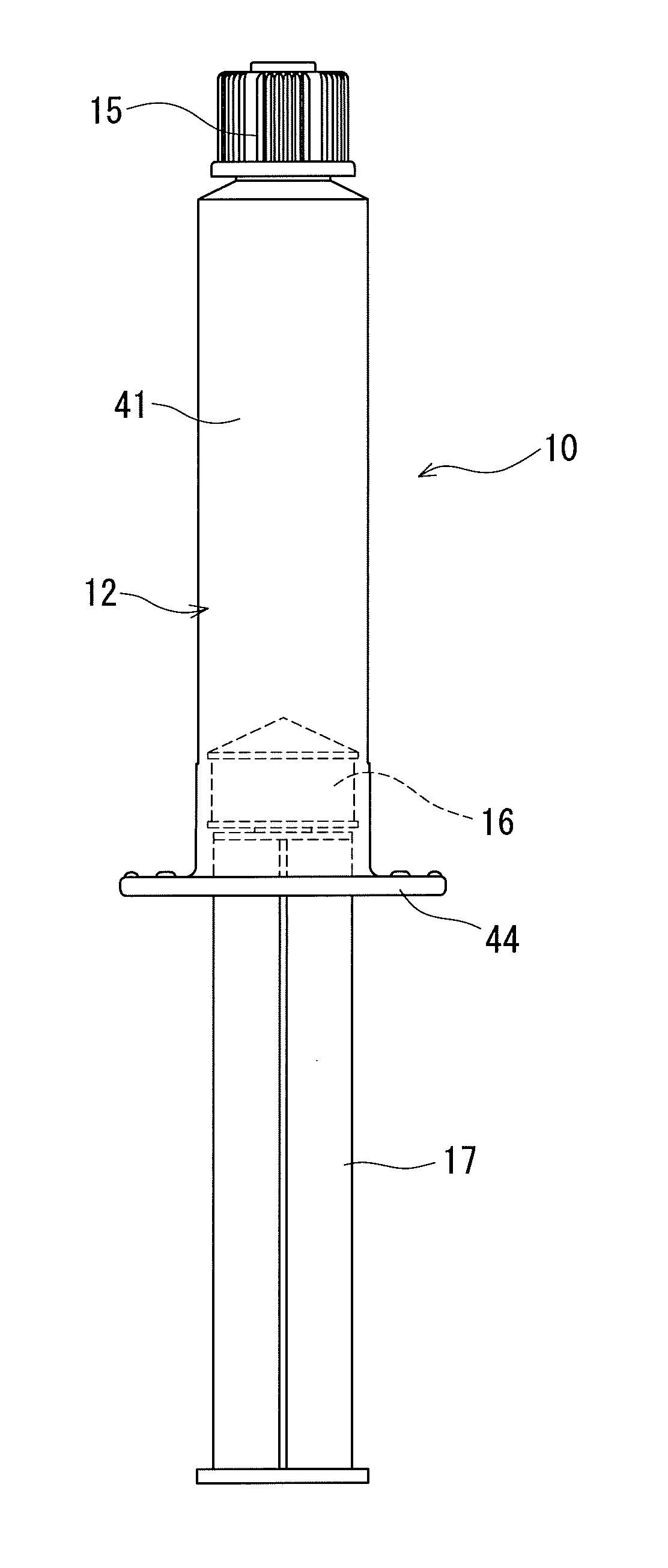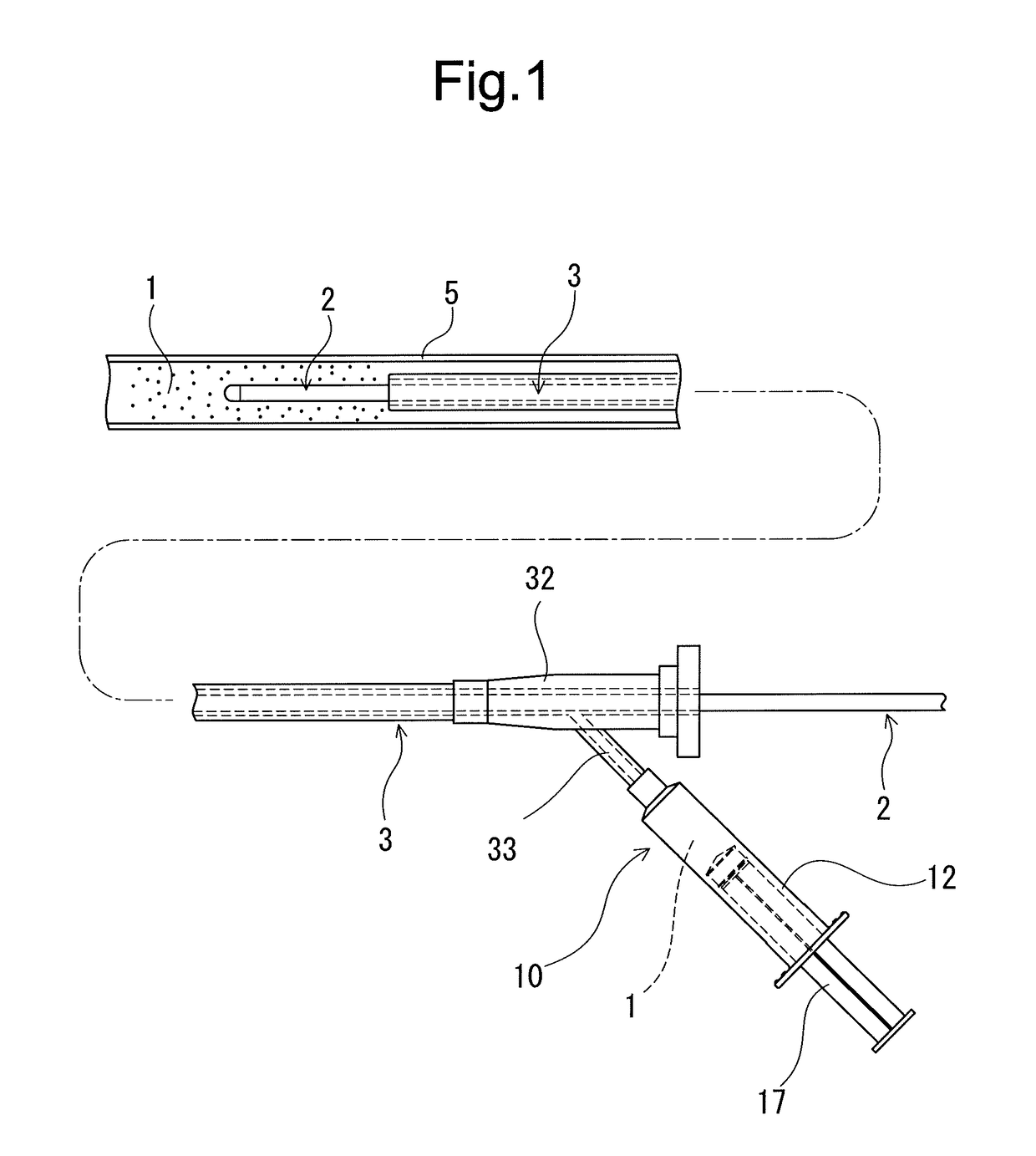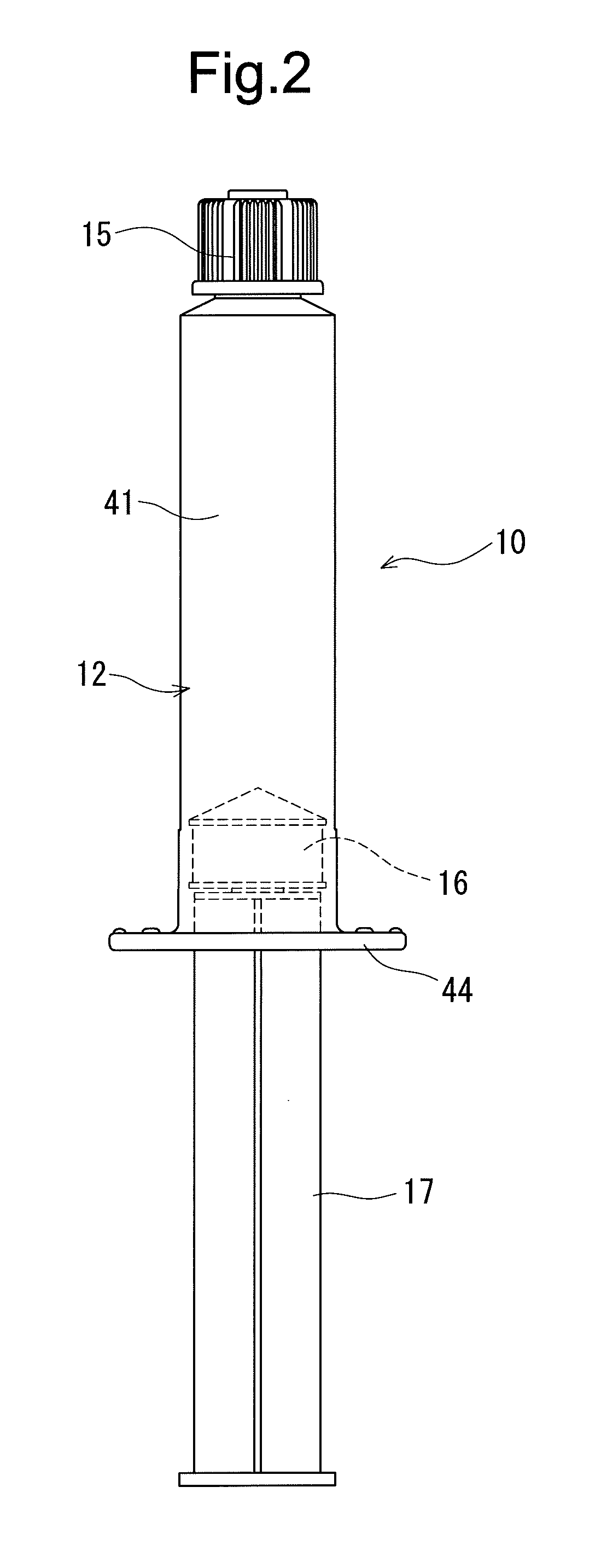In-vivo intravascular blood replacing liquid, in-vivo intravascular blood replacing liquid formulation, and prefilled syringe
- Summary
- Abstract
- Description
- Claims
- Application Information
AI Technical Summary
Benefits of technology
Problems solved by technology
Method used
Image
Examples
examples
[0105]1. The following substances were prepared as additives.[0106]1) Glycyrrhizin acid monoammonium (GLZA): produced by Maruzen Pharmaceuticals Co., Ltd.[0107]2) Thiamine chloride hydrochloride: produced by DSM Japan K.K.[0108]3) Gelatin: produced by Jellice Co., Ltd.[0109]4) Polyvinylpyrrolidone: molecular weight 40,000, produced by Sigma-Aldrich Corporation[0110]5) Polyethylene glycol 400: molecular weight 400 (PEG400: brand name), produced by Kanto Chemical Co., Inc.
[0111]2. The following apparatuses were prepared:[0112]1) OFDI intravascular image diagnosis apparatus: LUNAWAVE (registered trademark) produced by Terumo Corporation[0113]2) Guiding catheter (6Fr, inner diameter: 1.8 mm, outer diameter: about 2.0 mm): Heartrail (registered trademark) produced by Terumo Corporation[0114]3) Guiding catheter (5Fr, inner diameter: 1.5 mm, outer diameter: about 1.7 mm): Heartrail (registered trademark) produced by Terumo Corporation[0115]4) Guide wire: Runthrough ((registered trademark) ...
example 1
[0122]50 ml of water was added to 25 g of the monoammonium glycyrrhizinate to prepare a monoammonium glycyrrhizinate solution having a concentration of 0.5 mg / mL. 1 g of glucose and 0.225 g of sodium chloride were added to the monoammonium glycyrrhizinate solution to form an aqueous monoammonium glycyrrhizinate solution. The thiamine chloride hydrochloride solution was added to 10 ml of the prepared aqueous monoammonium glycyrrhizinate solution to form the in-vivo intravascular blood replacing liquid (flush solution). The mol ratio between the monoammonium glycyrrhizinate and the thiamine chloride hydrochloride was set to 1:1. The viscosity of the obtained flush solution at 25 degrees C. was 1.4 mPa·s.
example 2
[0123]The thiamine chloride hydrochloride solution was added to the aqueous monoammonium glycyrrhizinate solution formed in the example 1 to form the in-vivo intravascular blood replacing liquid (flush solution). The mol ratio between the monoammonium glycyrrhizinate and the thiamine chloride hydrochloride was set to 1:2. The viscosity of the obtained flush solution at 25 degrees C. was 1.7 mPa·s. The 1H-NMR spectrum of the flush solution of the example 2 was measured. The result of the measurement is as shown in FIG. 9. The spectrum shown with the black line (not grey line) in FIG. 9 is the 1H-NMR spectrum derived from thiamine. The half width of the peak derived from the thiamine of the flush solution is as shown in table 2.
PUM
 Login to View More
Login to View More Abstract
Description
Claims
Application Information
 Login to View More
Login to View More - R&D
- Intellectual Property
- Life Sciences
- Materials
- Tech Scout
- Unparalleled Data Quality
- Higher Quality Content
- 60% Fewer Hallucinations
Browse by: Latest US Patents, China's latest patents, Technical Efficacy Thesaurus, Application Domain, Technology Topic, Popular Technical Reports.
© 2025 PatSnap. All rights reserved.Legal|Privacy policy|Modern Slavery Act Transparency Statement|Sitemap|About US| Contact US: help@patsnap.com



